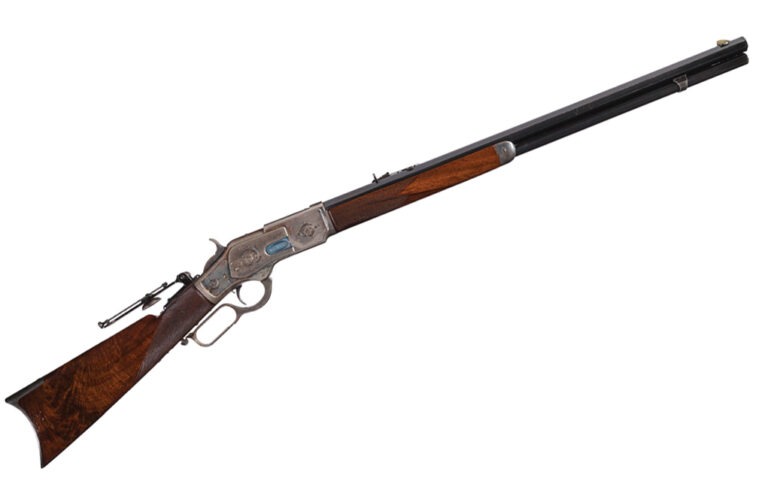
We dive into the history of the iconic Winchester 1873 to understand the role this classic lever-action rifle played in winning the West.
Name a famous or infamous personality from the Old West and there’s a good chance they used a Winchester 1873. It was the gun to own. A Winchester Model 1873 could spit out lead like no other rifle of its day. Nothing came close. And that was the Winchester’s edge, rapid firepower.
Winchester marketed the rifle as “The Gun That Won The West,” and that tagline turned out to be true. The Model 1873 was a complete success and created a legacy of Winchester lever-action rifles. Over 720,000 Model 1873 rifles were built and even though it was quickly rendered obsolescent by newer, stronger Winchester lever-action rifles, it was so popular that manufacturing continued through 1919. Call the ’73 iconic, call it legendary, this is the rifle that made Winchester a household name.
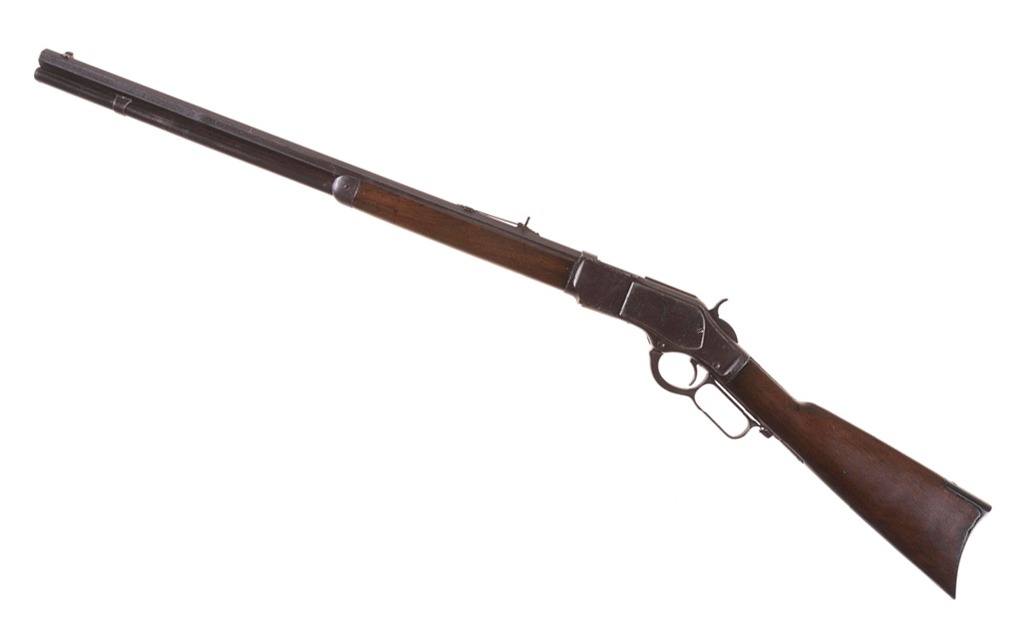
Volcanic Beginning
The Model 1873 heritage starts with the Volition Repeating Rifle developed in 1848 by Walter Hunt. This unique lever-action used a tubular magazine and fired a Rocket Ball, an early attempt at caseless ammunition that featured a black powder charge loaded into the hollow base of a lead bullet. The design wasn’t fully baked, but Lewis Jennings purchased Hunt’s patent in 1849 and tried to work out the bugs. Jennings produced working rifles, but the design was still too complex to see success.
The next entrepreneurs to buy the patent and take over the development reigns were Horace Smith and Daniel Wesson who would go on to form Smith & Wesson. Wesson and Smith hired Jenning’s shop foreman, Benjamin Tyler Henry, and acquired needed capital from investors to form the Volcanic Repeating Arms Company. Perhaps even more revolutionary than the lever-action rifle design was the work Smith did on refining the Rocket Ball concept. By adding a primer, and eventually a copper case as well, his improvements culminated in the release of the .22 Short rimfire cartridge in 1857, the first of its kind.
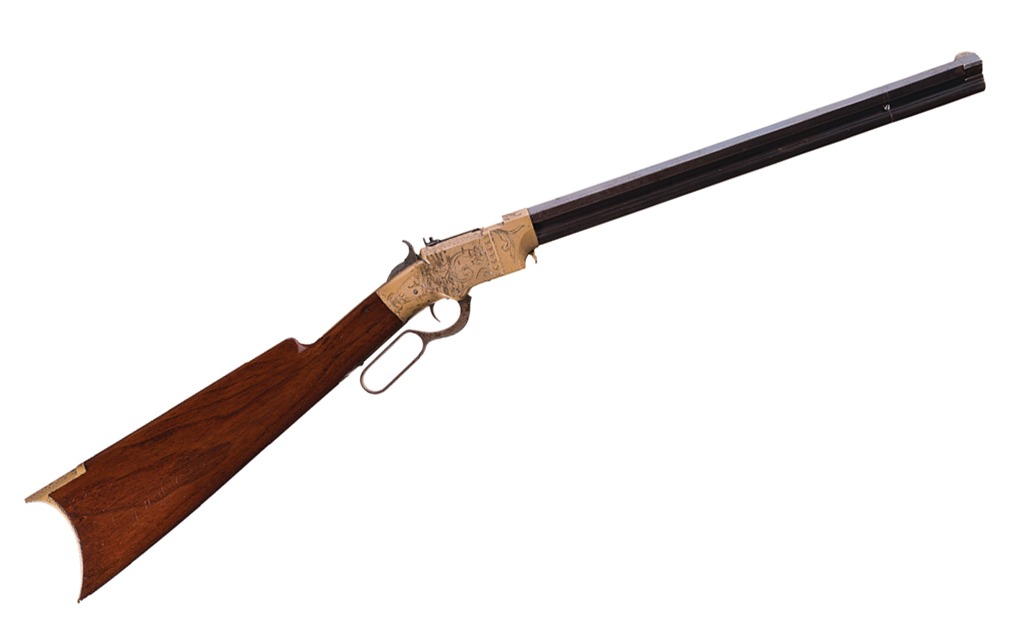
While the metallic cartridge was a big step forward, the Volcanic rifle itself wasn’t. The Volcanic Repeating Arms Company went belly up in 1856 and one of the company’s investors, Oliver Winchester, purchased the bankrupt company’s assets and in 1857 opened the New Haven Arms Company in New Haven, Connecticut.
Damn Yankee Rifle
Progress continued to be made on what would become the Winchester 1873, but it wasn’t there yet. Smith’s cartridge was reworked by Henry into the more potent .44 Henry, and the Henry 1860 lever-action rifle was developed to go along with it. Used by the Union Army in the Civil War, it earned the reputation of “that damned Yankee rifle that they load on Sunday and shoot all week!”
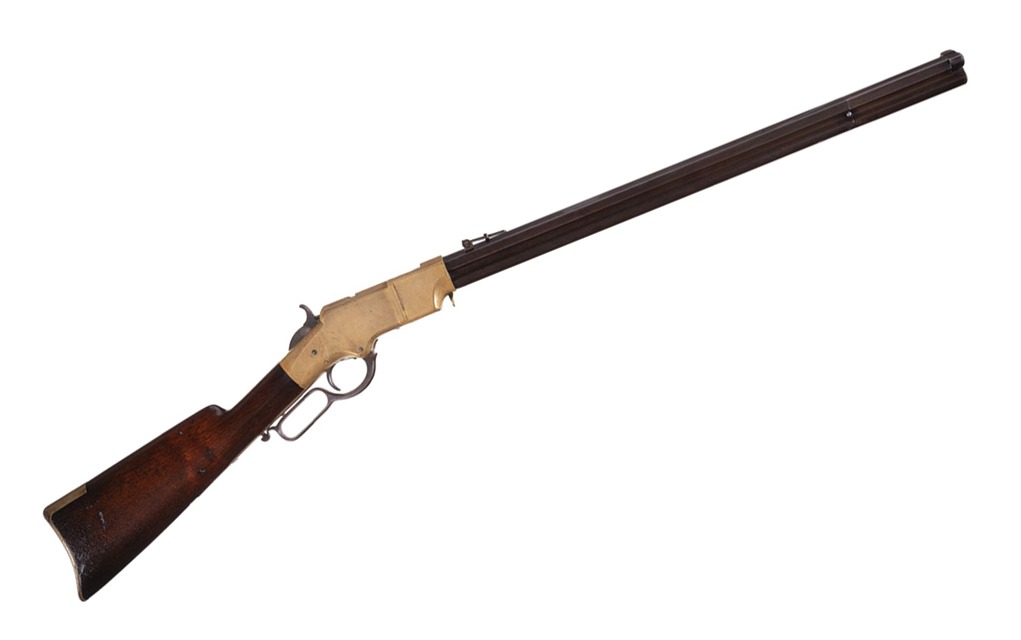
Following that, the rifle was improved upon and dubbed the Winchester Model 1866, but it was often called the “Yellow Boy” due to the color of its gunmetal (a brass-bronze alloy) receiver. Also chambered for .44 Henry, some of the Model 1866’s new features included a wood forend to protect the user’s hand from barrel heat, a side loading port and a sealed magazine tube. These rifles not only saw great success in the United States, but internationally as well, and it was leading the pack of repeating arms for a respectable seven years until the introduction of the Winchester 1873.

From Brass to Steel Frame
The Winchester 1873 offered several advancements over the Model 1866, but the most notable changes included the tougher steel receiver and the improved toggle link system. In turn, the Model 1873 quickly gained a reputation for being an extremely smooth-operating and reliable rifle.
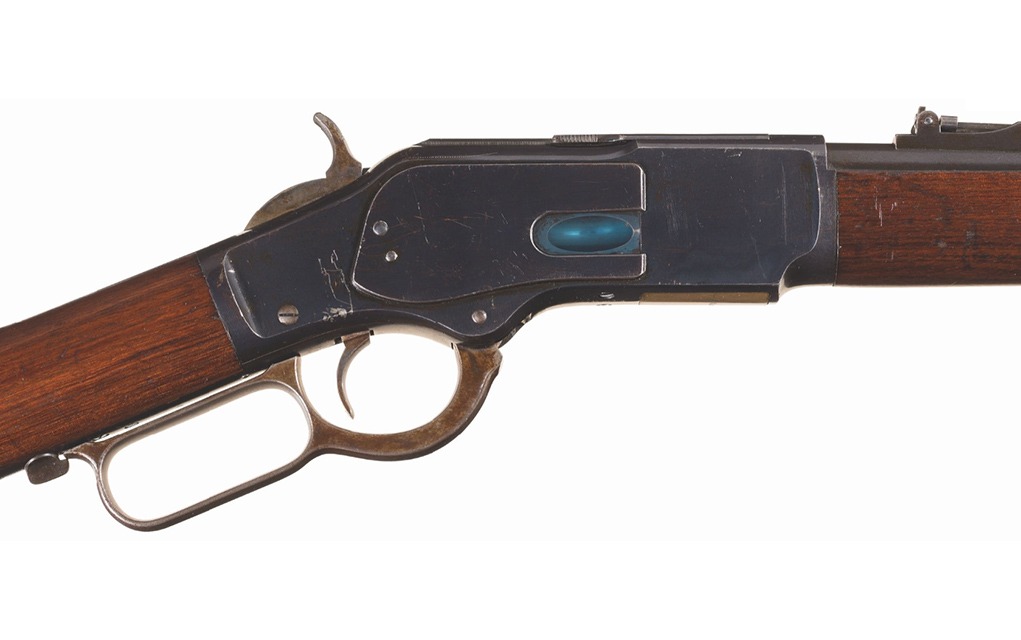
The two most common models are the standard Winchester 1873 which featured a 24-inch octagonal barrel and the carbine version fitted with a 20-inch round barrel, though there was also a musket version with a 30-inch barrel. The Winchester 1873 offered incredible firepower for its day, and being able to spit lead faster than the other guy is an edge in any gunfight. Besides outlaws and lawmen, the Model ’73 was also very popular with hunters who went after just about any game smaller than buffalo.

The Winchester Center Fire Cartridge
As mentioned, the more robust steel frame was the most obvious new feature of the Winchester 1873, and they didn’t make the switch just for aesthetics. Steel is more expensive, so there better have been a good reason.
That reason was its chambering for the new .44 Winchester Center Fire cartridge, also known as .44 WCF and .44-40. This black powder metallic cartridge was more powerful than the .44 Henry rimfire round, and according to Frank Barnes in Cartridges Of The World, “has killed more game, large and small, and more people, good and bad, than any other commercial cartridge ever developed.” The .44-40 was loaded with a 200-grain round-nose flat-point lead bullet and 40 grains of black powder with a muzzle velocity is 1,245 fps. The legacy of the ’73 is inseparable from the .44-40 cartridge. Winchester would go on to chamber the 1873 for .32-20, .38-40 and some other calibers later on as well.

Sheer Firepower
Cowboys, lawmen, desperadoes, settlers, and Native Americans were immediately awed by the Winchester 1873 when it was introduced. An impressively large magazine capacity and the ability to fire rapidly were the Model 1873’s strong suits and were what made the rifle so popular. The added value of the ’73 was its ability to be paired with a revolver. Colt and Remington soon chambered their single-action revolvers in .44-40 which gave the average cowpoke, sheriff or outlaw the ability to share ammunition between their handgun and long gun. A six-shooter carried alongside a rifle with 12 or 15 shots in its tube was a formidable combination, especially at the end of the 19th century.
The governments of Canada, Mexico and other groups abroad all purchased the Model ’73, but the U.S. Army surprisingly never adopted the iconic Winchester. The Army preferred the power of the .45-70 Government cartridge over .44-40, even if the .45-70 was only available in single-shot rifles.
That said, most hunters in the Old West found the .44-40 adequate for most western game like mule deer and antelope, as well as larger game like elk. The Winchester 1873 would never be considered a tack driver, nor is it a long-range caliber, but the effective range for a seasoned shooter is about 150 yards, and accuracy is good enough for hunting or defense. In the east, hunters found the caliber and rifle well suited for deer, black bear and all other sorts of critters big and small.
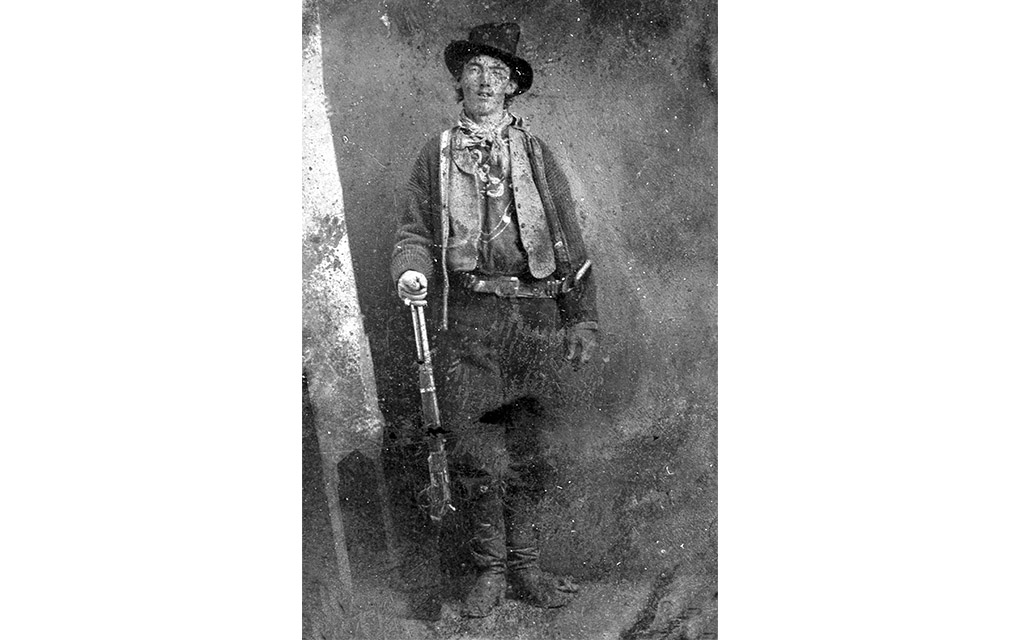
From Saddle Scabbards to the Silver Screen
The Winchester 1873 earned its reputation in the hands of famous and notorious users, both real and fictional. The one existing photograph of Billy the Kid shows him posing with a Winchester ’73. Pat Garrett, Billy’s pal and lawman, used a Winchester 1873 as did Butch Cassidy and Belle Starr. Buffalo Bill used a special-order Winchester 1873 with a smooth bore barrel in his Wild West Show. Texas Rangers like Ranger J.B. Gillett used a Model 1873 during numerous confrontations with Kiowa, Comanche and Apache tribes.
Native Americans respected the ’73 as well, and many were decorated with brass tacks and leather. Cartridge casings found at the Battle of Little Bighorn indicate that some Cheyenne, Lakota or Arapaho warriors used the Winchester Model 1873 rifle with other repeating rifles against General George Custer and his 7th Cavalry. Custer’s men were armed with single-shot Springfield Model 1873 carbines, which were slow to reload and were easily outgunned by the fast-shooting Winchester lever-actions.
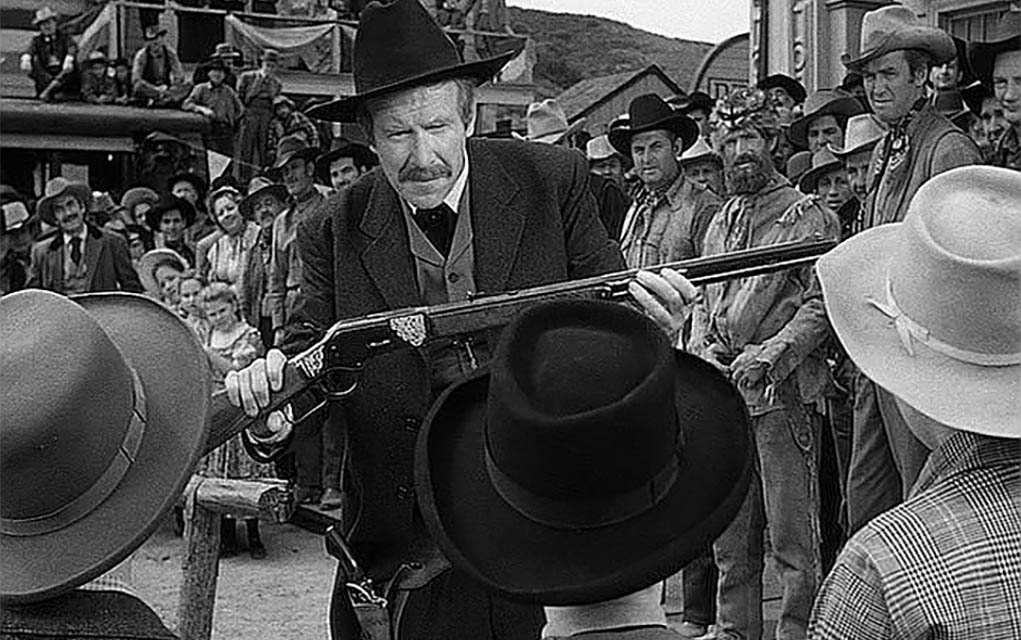
Clever marketing helped to create the original hype surrounding the Winchester 1873 and the rifle’s real-world performance cemented its reputation. But Hollywood was what ensured the lasting legacy of the Model 1873. Model 1873s were prominently featured in about every Western film worth mentioning, most notably the eponymous 1950 movie Winchester ’73 which starred James Stewart. If you haven’t seen it, I’d highly recommend changing that as it’s a must-watch for any lever-action fan.
Collecting The Winchester 1873
Seriously collecting original Winchester Model 1873 rifles is a rich man’s game. The guns were already pricey when sold new, but today, you need to be ready to pay several thousand dollars if you want one in good condition or are interested in acquiring multiple model variations. Some 1873s in poor condition have been known to sell for around $1,000, but once you start looking at higher condition grades, earlier production years and rarer model variants, the price goes up very quickly.
Early examples in excellent condition can easily exceed a $10,000 value, and rare examples fetch even more. For a particularly desirable model with documented provenance, such as Thomas Stuart’s One of One Thousand Winchester 1873, the auction price can even exceed a half-million dollars. That’s an extreme example, but the point stands that putting together a real ’73 collection will get expensive fast. If that’s something you’re still interested in doing, make sure you do proper research before dropping any major cash. The market is unfortunately rife with fakes and unscrupulous sellers.
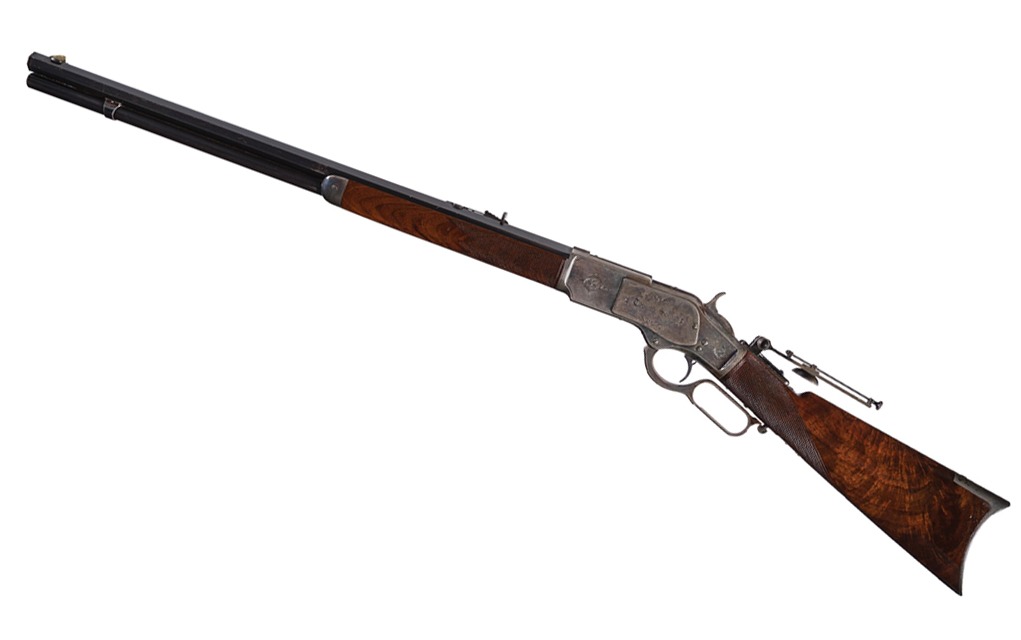
Reproduction Winchester 1873 Rifles
Cowboy Action Shooting began to blossom in the early 1980s with competitors dressing up in cowboy garb and shooting steel desperadoes and cactus with six-shooters, shotguns and rifles. All the reasons why the Model 1873 was prized in the Old West proved to make the rifle popular again. The smooth cycling ’73 has the speed and power that contemporary cowboys and cowgirls require to blast through stages. Italian firearm manufacturer Uberti began cloning versions of the model 1873 in the early 1990s and continues to offer a variety of customized options just like special-order original Winchesters back in the day. Uberti also makes Model 1873 rifles for Cimarron, Taylor’s & Company and others to those companies’ specifications.
In 2016, Winchester reintroduced the Model 1873 with a 150th Commemorative edition and two years later started to reintroduce more models. New Winchester Model 1873s are manufactured in Japan by Miroku. Many of these Italian- and Japanese-made 1873s use modern steel and some have additional safety features that the originals did not have. Winchester incorporates two modern safety features including a passive safety in the bolt that prevents the rifle from firing if it is dropped and a more robust interlock on the lever before you can press the trigger. Winchester also re-engineered the carrier block to eject empties away from the shooter and not above the shooter’s head like the originals did.
New production 1873s are mostly chambered in .45 Long Colt or .38 Special/.357 Magnum, though you can also find them chambered for some original black powder cartridges like .44-40, .32-20 and .38-40. The caliber choice mostly depends on whether you’re more interested in collecting historically accurate reproductions or being able to buy enough ammo to shoot them.
The Top 5 Winchester 1873 Reproductions To Own Today:
Uberti Special Sporting Short Rifle

Specs
- Caliber: .357 Magnum
- Capacity: 10+1
- Barrel Length: 20 Inches
- Overall Length: 43.25 Inches
- Weight: 8.2 Pounds
- Finish: Case Hardened / Blue Steel
- Furniture: Checkered A-grade Walnut
- MSRP: $1,549
Pros
- Handy size
- Attractive finish
Cons
- Only one chambering option for short model
Perhaps my favorite Spaghetti Western 1873 is the Uberti Special Sporting Short Rifle. This .357 has a 20-inch octagonal barrel, a color case-hardened receiver and a checkered pistol grip stock and forend made of A-grade Walnut. In my opinion, this rifle rivals any of the original special-order Winchesters offered back in the day. There’s also a Special Sporting Rifle variant with a longer barrel available in .45 Long Colt.
Taylor’s & Company 1873 Comanchero Rifle

Specs
- Caliber: .357 Magnum ; .45 LC ; .44 Special ; .44-40 ; .38-40
- Capacity: 10+1
- Barrel Length: 18 Inches
- Overall Length: 36..87 Inches
- Weight: 7.39 Pounds
- Finish: Case Hardened / Blue Steel
- Furniture: Walnut
- MSRP: $2,211.24 (.357 Mag.)
Pros
- Features ideal for speed and comfort when shooting competitions
- Available in both original and practical caliber options
Cons
- Most expensive model on list
If you are looking for tuned performance against steel and cardboard desperadoes, the Taylor’s & Company 1873 Comanchero Rifle is your ticket to speed. This rifle has a half-octagonal and half-round 16-inch barrel so it helps absorb recoil yet swings quickly. It features a short-stroke action, meaning the lever arc is shorter than on a standard gun and it has a lighter trigger pull too. The butt and lever are wrapped in leather for softer recoil and less wear and tear on your shooting hand when operating the gun. This model is available chambered in .357 Magnum, .45 Long Colt, .44-40, .44 Special and .38-40.
Cimarron Texas Brush Popper

Specs
- Caliber: .44 LC ; .44-40
- Capacity: 10+1
- Barrel Length: 18 Inches
- Overall Length: 36.87 Inches
- Weight: 7.39 Pounds
- Finish: Case Hardened / Blue Steel
- Furniture: Walnut
- MSRP: $1,318.20
Pros
- Good features for competition
Cons
- No .357 Magnum chambering option
The Cimarron Texas Brush Popper is another good choice for cowboy action shooting. It features an 18.5-inch half-octagon half-round barrel and is available with either a straight or pistol grip style stock. These short rifles offer excellent balance and attractive case-hardened receiver finishes and are available in either .44-40 or .45 Long Colt.
Winchester Model 1873 Carbine

Specs
- Caliber: .357 Magnum ; .45 LC ; .44-40
- Capacity: 10+1
- Barrel Length: 20 Inches
- Overall Length: 39 Inches
- Weight: 7.25 Pounds
- Finish: Brushed polished steel
- Furniture: Grade I Black Walnut
- MSRP: $1,429.99
Pros
- Features original Winchester branding
- Most classic model on list
- Original and practical chambering options
Cons
- No improvements for shootability, not ideal for competition
The Winchester Model 1873 Carbine is perhaps the most classic of all the 1873 reproduction models. It features a 20-inch round barrel, a straight grip with a smooth, oil-finish walnut stock and forend and a deep-blued finish on its metal. It’s available in the original .44-40 chambering as well as .357 Magnum and .45 Long Colt.
Winchester Model 1873 Sporter

Specs
- Caliber: .357 Magnum ; .45 LC ; .44-40
- Capacity: 14+1
- Barrel Length: 24 Inches
- Overall Length: 43 Inches
- Weight: 8 Pounds
- Finish: Polished Blued
- Furniture: Grade II/III Black Walnut
- MSRP: $1,869.99
Pros
- Higher quality and more attractive components
- Better ballistics due to longer barrel
- Larger magazine capacity
- Original and practical chambering options
Cons
- Added length, weight and value make it not ideal for competition
Life is too short to shoot an ugly rifle, so Winchester is producing the new Model 1873 Sporter, which could be a dead ringer for an original special-order Winchester rifle. Features include a 24-inch full octagon barrel, a Grade II walnut stock and forend, and a case-hardened finish. It’s available in .44-40, .357 Magnum, and .45 Long Colt.
More On Lever-Actions:

Next Step: Get your FREE Printable Target Pack
Enhance your shooting precision with our 62 MOA Targets, perfect for rifles and handguns. Crafted in collaboration with Storm Tactical for accuracy and versatility.
Subscribe to the Gun Digest email newsletter and get your downloadable target pack sent straight to your inbox. Stay updated with the latest firearms info in the industry.
